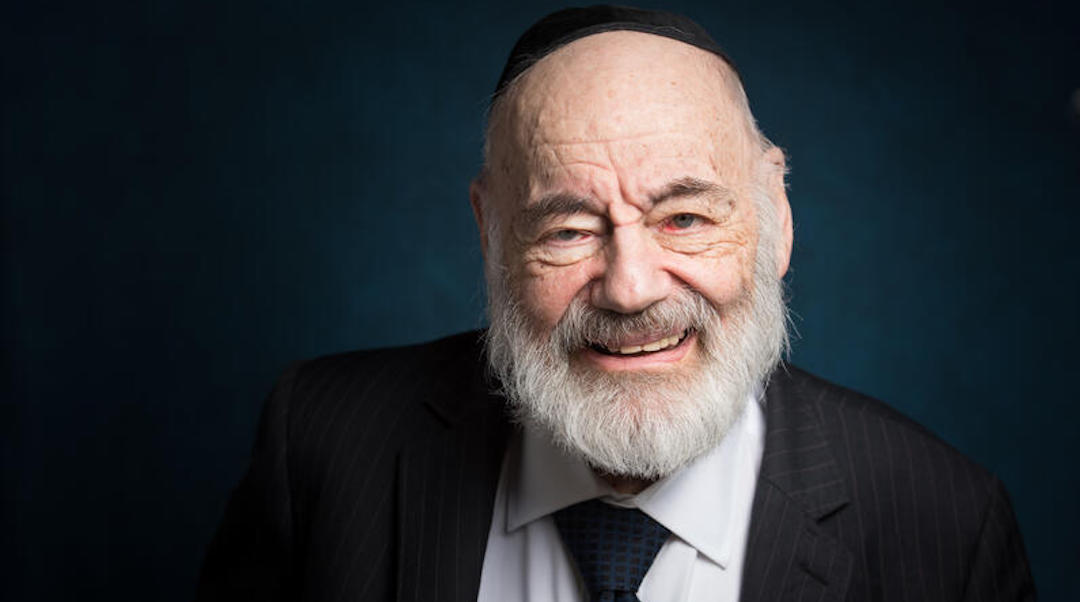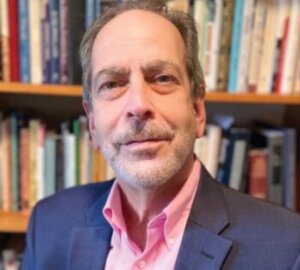Rabbi Zevulun Charlop, dean who led Yeshiva U seminary through period of growth, dies at 94
Charlop once said that his ideal YU would be “a yeshiva like Volozhin,” a legendary seminary in what is now Belarus, and a university like Columbia

Rabbi Zevulun Charlop served as dean of Rabbi Isaac Elchanan Theological Seminary at Yeshiva University from 1971-2008. (Yeshiva University)
(JTA) — Rabbi Zevulun Charlop, who as dean of the rabbinical seminary at Yeshiva University for 37 years oversaw a period of enormous growth for the Modern Orthodox institution, died Jan. 16. He was 94.
When Charlop was named dean of Rabbi Isaac Elchanan Theological Seminary at Y.U. in 1971, it had 154 students. When he retired in 2008, it had 340.
Charlop was also on hand for a transition in American Orthodoxy, training American-born, college-educated rabbis to succeed the European-trained rabbis who had held pulpits and led yeshivas through much of the 20th century.
“When I first came to Yeshiva as a student” in the 1940s, “almost all of the roshei yeshiva were European-trained” and many lacked university degrees, he told the New York Jewish Week in 2008, referring to the top scholars on the RIETS faculty. In 2008, he said, over 90% of RIETS faculty trained at Y.U., which offered undergraduate and graduate degrees in addition to ordination.
Charlop saw the transition as a fulfillment of the Y.U. philosophy, “Torah umadda,” or Jewish and secular learning, which posited that Orthodox Jews should take part fully in general society without compromising on their religiosity.
Charlop wanted RIETS “to be a place of intense Torah scholarship,” Chaim Bronstein, an administrator at the seminary, recalled in a tribute upon Charlop’s retirement. However, “he did not want our students and roshei yeshiva to remain in an ivory tower. He wanted them to go out into the community. He wanted to produce rabbis who can relate to the broadest range of Jews throughout the country and throughout the world.”
Charlop was himself a pulpit rabbi, having been given a lifetime contract in 1966 at age 36 by the Young Israel of Mosholu Parkway in the Bronx, New York. Charlop led the synagogue through a period of declining fortunes in the Bronx and the flight of many of the Jews from the neighborhood to the suburbs and other neighborhoods in New York City.
“On Rosh Hashanah, 1977,” he told the New York Jewish Week, “we sold 875 seats” in a main and overflow service. “In 1978, we lost 40 seats. By 1985, we didn’t need a second service. The next year it was less. The next year, it was less than that. We still have many members but few in the neighborhood.” The synagogue closed in 2015.
Charlop was considered an authority on Torah and Talmud and lectured in American history. His scholarly essays include “The Making of Orthodox Rabbis” for the Encyclopedia Judaica and “God in History and Halakha from the Perspective of American History” for The Torah U-Madda Journal, a Y.U. publication. Charlop was also editor of three novellas on Torah and Talmud by his late father, Jechiel Michael Charlop, a Jerusalem-born rabbi.
Aaron Goldscheider, the former rabbi at Mount Kisco Hebrew Congregation in New York’s Westchester County, recalled visiting the dean’s office and studying the writings of Charlop’s grandfather, Ya’akov Moshe Charlop, a disciple of Abraham Isaac Kook, the chief rabbi of Palestine.
“[S]itting in Yeshiva University, a bastion of Lithuanian learning, I was treated to a glimpse of the more mystical world of study characteristic of Rav Kook and his protege Rabbi Charlop,” Goldscheider recalled in the acknowledgements of his book, “Torah United.” “It is impossible to put into words my feelings of gratitude for those precious weekly meetings. They were a source of inspiration at the time and continue to carry me until this day.”
After his retirement, Charlop served as dean emeritus and special advisor on yeshiva affairs to Yeshiva University’s then-president Richard M. Joel.
Zevulun Charlop (pronounced khar-LOP) was born in the Bronx on Dec. 14, 1929. His father had arrived in New York in 1920 and after his own ordination at RIETS served as a pulpit rabbi in New York, Canton, Ohio and Omaha, Nebraska. In 1925, the elder Charlop returned to New York and became the rabbi at the Bronx Jewish Center.
Zevulun attended Yeshiva Salanter in the Bronx and Talmudical Academy, which would later be known as Yeshiva University High School for Boys. He earned degrees at Yeshiva College and Columbia University, and was ordained at RIETS.
Charlop once said that his ideal Y.U. would be “a yeshiva like Volozhin,” a legendary seminary in what is now Belarus, and a university like Columbia. But he would also note wryly that the Vietnam War turned out to be a great recruiter for Y.U., at a time when rabbinical students could earn a deferment from the draft.
Charlop inherited an activist streak from his father, who was one of the organizers of the 1943 “Rabbis’ March” on Washington, D.C. protesting inaction during the Holocaust. Charlop himself led his synagogue in supporting integration during the civil rights movement and various Jewish causes, including the fight for Soviet Jewry and support for Israel. But there were limits to an Orthodox rabbi’s role, he told the student publication Kol Hamevaser in 2012, when Y.U. was facing competition from activist rabbis who sought to liberalize Modern Orthodoxy’s approach to women’s roles and other issues.
“Turning a yeshiva into a big tent can be a dangerous thing; if we start lessening our inward Torah focus then we may start neutralizing learning and, rahamana litslan, yir’as shamayim [God have mercy, our fear of heaven],” he said. “In order to be able to sustain the multifaceted world that we have here in Yeshiva, we have to be deeper in the core. So long as we know that in this process we may be willy-nilly, lightening the thrust of our Torah learning, then widening the tent cannot be achieved. Rather, we must widen and, indeed, deepen our Torah learning and kiyyum ha-mitsvos [fulfill the commandments] at the core.
Charlop served as president of the American Committee for the United Charities in Israel, General Israel Orphans Home for Girls in Jerusalem, and the National Council of Young Israel rabbis.
His survivors include two sons, Rabbi Alexander Ziskind Charlop and Rabbi Zev Charlop, and six daughters, Peshi Neuburger, Leebee Rochelle Becher, Annie Riva Charlop, Shoshana Schneider, Zipporah Raymon and Miriam Reiss. His wife, Judith, died in 1999.
This article originally appeared on JTA.org.
















